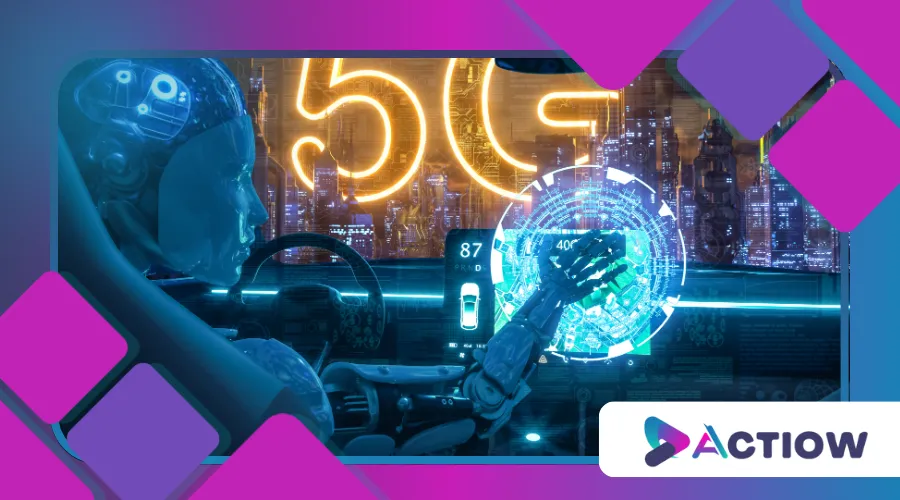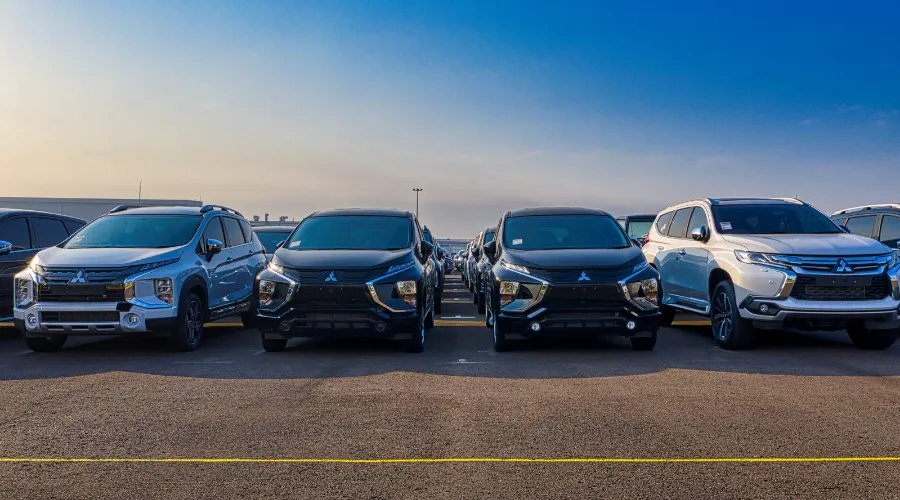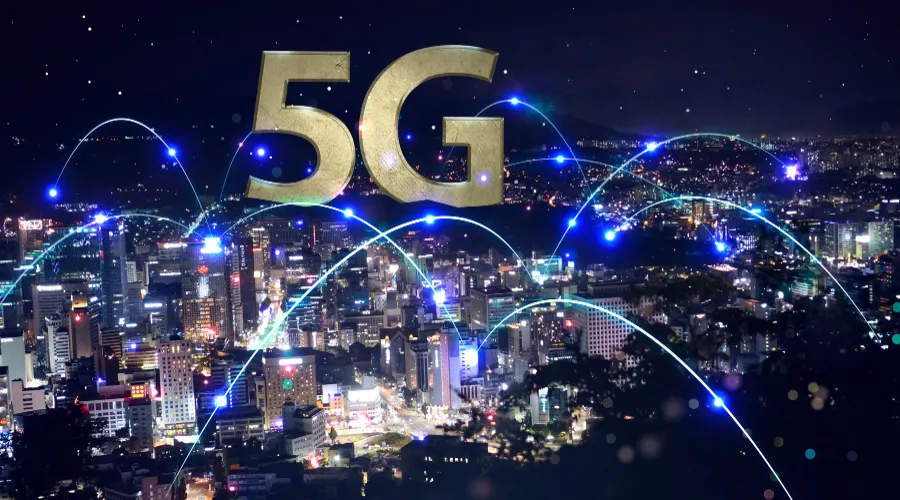5G in Cars: What It Actually Enables in Real-Time Driving

Anúncios
The advent of 5G in cars is no mere technological upgrade; it’s a seismic shift reshaping the automotive landscape.
Imagine a highway where vehicles communicate faster than human reflexes, anticipate hazards, and navigate with precision that rivals a chess grandmaster’s foresight.
This isn’t science fiction—it’s the promise of fifth-generation wireless technology applied to driving.
Anúncios
But what does 5G truly unlock in real-time scenarios?
Beyond the buzzwords, this technology is poised to redefine safety, efficiency, and the very experience of being behind the wheel.
Let’s dive into how 5G is steering the future of mobility with unparalleled connectivity.
As we explore these advancements, it’s essential to recognize that the integration of 5G technology in vehicles is not just about improving driving; it’s also about enhancing the overall transportation ecosystem.
With the rise of smart cities and connected infrastructure, the synergy between vehicles and urban environments will play a crucial role in shaping the future of mobility.
The Speed of Now: Why 5G’s Latency Matters
Picture a busy urban intersection at rush hour.
A pedestrian steps off the curb unexpectedly.
In a pre-5G world, a car’s reaction depends on the driver’s attention or, at best, slower 4G-based systems with noticeable lag.
With 5G in cars, ultra-low latency—often under 1 millisecond—enables vehicles to process and respond to data almost instantly.
This speed is akin to a sprinter’s twitch at the starting gun, where every fraction of a second counts.
This low latency powers vehicle-to-everything (V2X) communication, allowing cars to “talk” to other vehicles, traffic lights, and even pedestrians’ smartphones in real time.
For instance, a 5G-equipped car could receive a signal from a nearby vehicle braking suddenly, adjusting its own speed before the driver even notices.
According to a 2024 study by the 5G Automotive Association (5GAA), V2X systems using 5G can reduce collision rates by up to 20% in dense urban environments.
This isn’t just about avoiding fender-benders; it’s about saving lives through split-second decisions.
| Feature | 4G Latency | 5G Latency |
|---|---|---|
| Data Transmission Speed | ~50 ms | ~1 ms |
| Application | Basic Alerts | Real-Time V2X |
Moreover, the implications of reduced latency extend beyond immediate safety.
As vehicles become more interconnected, the potential for coordinated traffic management increases, leading to smoother traffic flows and reduced congestion.
Redefining Navigation with Real-Time Precision
Navigation systems have come a long way since the days of clunky GPS units.
Yet, even modern systems can falter in complex scenarios—think construction zones or sudden traffic shifts.
5G in cars changes this by enabling high-definition, real-time mapping that updates faster than you can blink.
Unlike 4G, which struggles with large data transfers, 5G’s bandwidth supports dynamic 3D maps that integrate live traffic, weather, and road condition data.
Consider a scenario in rural Colorado: a sudden snowstorm blankets the roads.
A 5G-connected car instantly pulls updated maps showing ice patches detected by other vehicles, rerouting the driver via a safer path.
This isn’t just convenience; it’s a lifeline.
The high bandwidth of 5G—up to 10 Gbps—ensures these maps load seamlessly, even in areas with spotty coverage.
By contrast, 4G often chokes on such data-heavy tasks, leaving drivers with outdated information.
What’s more, 5G enables crowd-sourced navigation.
Cars become nodes in a vast network, sharing real-time data about road hazards or traffic jams.
This collective intelligence makes navigation not just reactive but predictive, turning your car into a rolling supercomputer that anticipates the road ahead.
In addition to improving navigation, this real-time data sharing can enhance overall road safety.
As vehicles communicate about hazards, drivers can make informed decisions, potentially reducing accidents caused by unforeseen obstacles.
+ Active Safety Systems: Technologies That Prevent Accidents
Autonomous Driving: From Vision to Reality
Can a car truly drive itself with the confidence of a seasoned chauffeur?
With 5G in cars, the answer edges closer to “yes.”
Autonomous vehicles rely on a torrent of data from sensors, cameras, and radar.
Processing this data in real time requires connectivity that 4G simply can’t handle.
5G’s high-speed, low-latency network acts like a nervous system, enabling split-second decisions that keep self-driving cars safe and efficient.
Take an example from a bustling city like Los Angeles.
An autonomous taxi navigating downtown must process inputs from multiple sources: a cyclist swerving, a traffic light changing, and a construction barrier appearing.
5G allows the car to upload sensor data to the cloud, where AI models analyze it and send back instructions in under a second.
This cloud-to-car pipeline is critical for level 4 and 5 autonomy, where human intervention is minimal or nonexistent.
Without 5G, the lag in data processing could mean the difference between a smooth stop and a dangerous delay.

| Autonomy Level | 5G Role | Key Benefit |
|---|---|---|
| Level 3 | Enhanced sensor data sharing | Conditional automation support |
| Level 4/5 | Real-time cloud AI processing | Full automation in complex scenarios |
Furthermore, the successful deployment of autonomous vehicles will depend on public acceptance and regulatory frameworks that can adapt to this new technology.
As 5G paves the way for safer autonomous driving, ongoing dialogue between stakeholders will be essential to address safety and ethical considerations.
++ How Vehicle-to-Everything (V2X) Tech Is Reshaping Urban Mobility
Enhancing In-Car Experiences: Beyond the Drive
While safety and navigation grab headlines, 5G in cars also transforms the passenger experience.
Modern vehicles are becoming rolling entertainment hubs, and 5G’s bandwidth makes this possible without compromise.
Streaming 4K movies, gaming online, or conducting virtual meetings—all while cruising at 70 mph—require a network that can handle massive data loads without buffering.
Imagine a family road trip from Chicago to St. Louis.
The kids in the backseat are immersed in an augmented reality game, where virtual characters interact with the passing scenery, powered by 5G’s ability to stream high-resolution content in real time.
Meanwhile, a parent joins a Zoom call with crystal-clear video, uninterrupted by network hiccups.
This level of connectivity turns cars into extensions of our digital lives, making long drives feel less like a chore and more like a mobile lounge.
Moreover, 5G enables over-the-air (OTA) updates that keep vehicles current without a trip to the dealership.
Tesla, for instance, already uses OTA for software upgrades, but 5G makes these updates faster and more robust, patching everything from infotainment systems to autonomous driving algorithms in minutes.
As the entertainment landscape evolves, the potential for partnerships with content providers could further enhance the in-car experience.
This could lead to personalized content offerings that cater to individual preferences, making journeys even more enjoyable.

Safety First: Predictive Analytics and Emergency Response
Safety isn’t just about avoiding crashes—it’s about anticipating them.
5G in cars empowers predictive analytics by feeding real-time data into AI models that forecast risks.
For example, a car approaching a foggy stretch of highway could receive a warning about reduced visibility, based on data from vehicles ahead.
This predictive power stems from 5G’s ability to handle vast datasets, enabling cars to act proactively rather than reactively.
In emergencies, 5G’s role is even more critical.
If a crash occurs, a 5G-connected vehicle can instantly alert emergency services, transmitting precise location data, crash severity, and even passenger vitals (via wearable integration).
A 2023 report by Ericsson estimated that 5G-enabled emergency response systems could reduce response times by 15%, potentially saving thousands of lives annually.
This is connectivity as a guardian angel, ensuring help arrives when seconds matter most.
Additionally, as predictive analytics improve, the potential for integrating health monitoring systems within vehicles could provide real-time insights into driver wellness, further enhancing safety.
The Road Ahead: Challenges and Opportunities
Despite its promise, integrating 5G in cars isn’t without hurdles.
Infrastructure gaps, especially in rural areas, can limit coverage, leaving some drivers disconnected.
Cybersecurity is another concern—hackers targeting connected cars could exploit vulnerabilities in V2X systems.
Automakers and telecom providers must collaborate to fortify networks and ensure seamless coverage, a task that’s as much about policy as it is about technology.
Yet, the opportunities outweigh the challenges.
As 5G networks expand—Verizon and AT&T aim to cover 90% of U.S. highways by 2027—the potential for innovation grows.
From smart cities where traffic flows like a symphony to fleets of autonomous delivery vehicles, 5G is the backbone of a connected future.
The question isn’t whether 5G will transform driving, but how quickly we can embrace its full potential.
To stay updated on the latest developments in 5G technology and its impact on various industries, visit GSMA, which provides comprehensive insights and research on mobile technology.
As we navigate these challenges, collaboration among industry stakeholders will be crucial to ensure that 5G’s benefits are realized across the board.
Conclusion: Driving into a Connected Tomorrow
The integration of 5G in cars is more than a tech trend; it’s a revolution in motion.
From slashing crash risks to enabling autonomous precision, from redefining navigation to elevating in-car entertainment, 5G is the key to a smarter, safer, and more enjoyable driving experience.
As networks grow and vehicles evolve, the road ahead promises a future where cars don’t just drive—they think, communicate, and anticipate.
So, the next time you hit the highway, consider this: with 5G, your car isn’t just a vehicle; it’s a node in a vast, intelligent network, steering us toward a connected tomorrow.
In this rapidly changing landscape, staying informed and adaptable will be key for both consumers and manufacturers as they embrace the full potential of 5G technology in the automotive sector.
